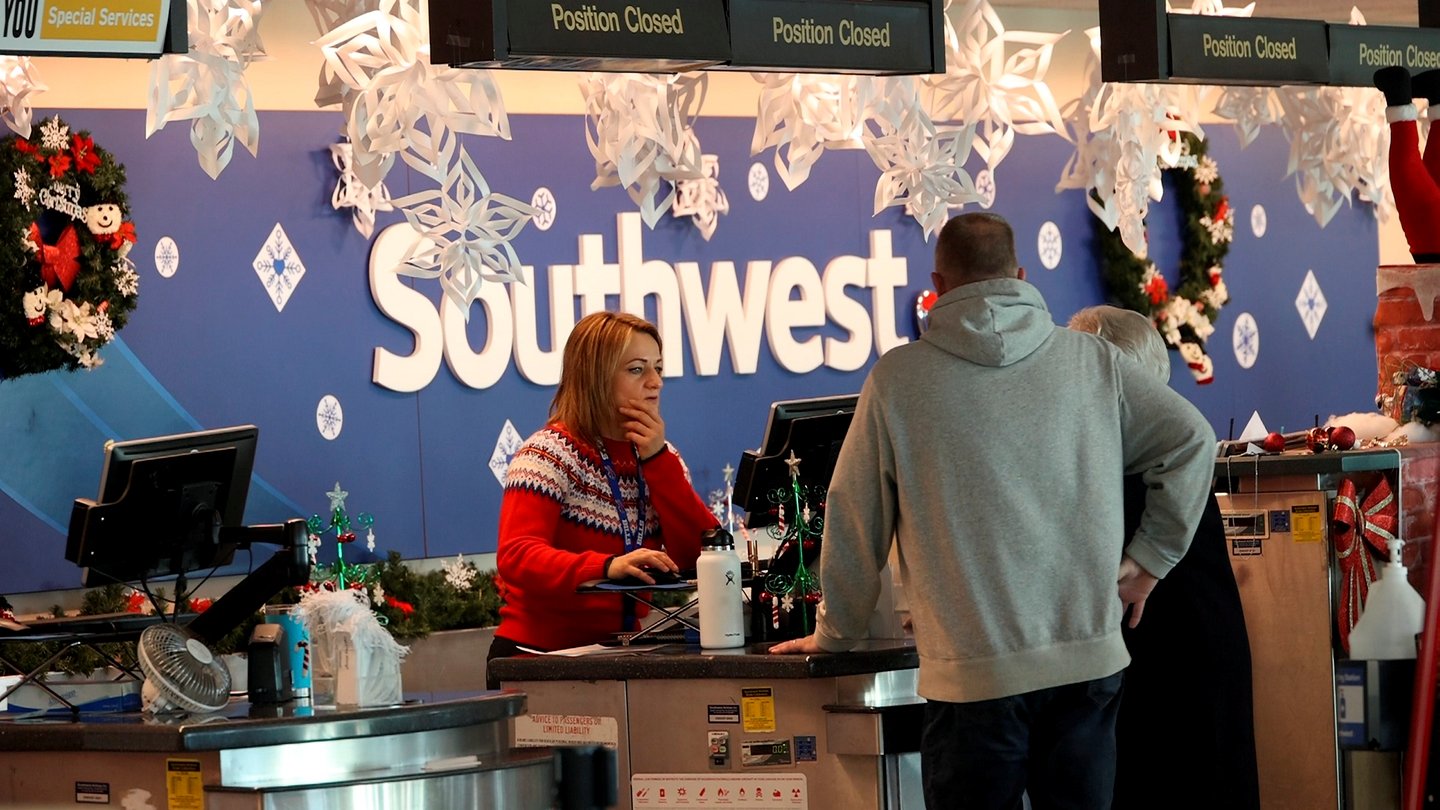Technical Debt Skeletons: How Retail and CPG CIOs Can Prevent Their Own Southwest Meltdown
The Southwest Airlines December debacle, in which thousands of their customers were left stranded during a peak period, undoubtedly left many IT leaders shifting uneasily in their chairs, knowing that such a public black eye could happen to their own organizations.
While the airline’s troubles stemmed from a number of factors, including the weather, the company’s failure to invest in the technology required to keep its once-innovative point-to-point operating model running at optimal performance played a critical role, according to a number of analysts and industry experts CGT spoke with. As a result, the model that once afforded Southwest a distinctive competitive advantage ultimately collapsed in on itself.
Thanks to the very public meltdown, the term “technical debt” found itself pushed through to the mainstream lexicon. Although its most literal definition refers to code, technical debt is generally accepted to include the impact of aging technology or business decisions made out of expedience — an issue known intimately by retail and consumer goods tech executives.
“The CIOs are the ones who know which skeletons are in the closet — the scary things that we're all afraid to open the door and actually shine the light on,” Mark Taylor, CEO of the Society for Information Management, noted to CGT.
In fact, nearly a third of CIOs said in a McKinsey survey that resolving issues related to technical debt may account for more than 20% of their budgets for new products, while tech debt may amount to up to 40% of the value of their technology estate.
Skip here to learn how to deal with your technical debt.
Retailers and CPGs may be particularly at risk for technical debt thanks to the fast-paced nature of their industries and the need to constantly implement new technologies and systems, according to Sourav Banerjee, SVP and industry head, consumer, retail, and logistics at IT consultancy Infosys. And given the assumed levels of trust between these companies and their customers, they’re especially vulnerable to the extreme damage, both revenue and reputational, that’s wrought when tech-related issues arise.
“Customers of brands expect that those brands are servicing them to the best of their ability, and that expectation extends to all aspects of the business, even if they aren’t customer-facing,” said Elizabeth Lafontaine, chief retail analyst at Retail Leader Pro. “Having a technical debt that can cause such a disruption for customers is a clear violation of that trust between brand and consumer.”
Playing a Difficult (and Risky) Game
The trade-off between being proactive and increasing expenses remains a particular challenge for publicly owned companies, said Howard Dodd, Gartner senior director and analyst. “Very large global enterprises can because they planned for it, and they have the maturity. But smaller enterprises are playing almost roulette with whether or not the [disruptive] event happens, and whether or not they can shift fast enough.”
(While Southwest declined to be interviewed, a spokesperson stated to CGT that technology investment at the company is ongoing and prioritized. She cited such examples as replacing its entire reservations system in 2017; completing a multi-year tech enhancement for its technical operations department in 2021, described as the most critical system update undertaken in the history of its maintenance organization; and recent tech investments in the ground operations department.)
The retail landscape is littered with examples of companies unable to pivot quickly enough to the e-commerce, fulfillment, or customer service requirements of today’s consumers, and the pandemic only exacerbated the issue. Mix in a labor shortage and layer on a weather event, and a cocktail forms for a reputation-busting disruption.
For retailers and CPGs, the Southwest fallout should not only renew conversations around IT infrastructure and investments, but also how companies are delivering against their promises to their consumers, stressed Lafontaine. “Southwest highlighted what a domino effect one misstep can have on the brand value, which should prompt conversations within other organizations about how to mitigate operational risks. Consumer loyalty is at an all-time low across many industries, and a brand misfire of this level can leave lasting doubt by consumers.”
Unfortunately, while everyone CGT spoke with agreed that the event should serve as a wake-up to companies about the seriousness of addressing technical debt — several suspected it would even present as a case study for execs to bring back to their boards — the reality as to whether they will act remains cloudier.
“These events serve as wake-up calls, but I don't know that we have empirical evidence to say it actually triggers a behavioral change, which is unfortunate,” said Dodd.
How to Act
No matter your seat in the IT organization, there’s a role in taking action. Good-for-now isn’t a viable plan, particularly in a constrained economic environment, and consumer expectations are only getting loftier.
“It’s imperative that brands think about IT infrastructure strategies further out to ensure that they are up to date with the latest trends,” said Lafontaine. “Investing now, even during challenging economic headwinds and less consumer demand, ensures that brands can meet consumer expectations and deliver against those in the future.”
Get visibility: Getting started includes inventorying and prioritizing the most pressing matters you’re facing. Companies should conduct a technical debt assessment to identify shortcomings, and then rank the most serious issues and the resources required to fix them.
In scoring priority, it’s important to determine the risk associated with failing to act, said Dodd, whether that’s compliance, revenue loss, partner alienation, broken service agreements, or poor customer service.
Determining probability that the risk will manifest is also a factor, but “if that item floats into my top 10, I have to make time for it,” he added. “Because I cannot predict when that event shows up or not.”
Make it repeatable: Importantly, this process must be updated on a regular basis. “This can't be a snapshot,” said Dodd. “You have to do it every six to 12 months, because technology is changing, your customers are changing, and the business environment is changing.”
Think like a product owner: Companies developing innovations that rely upon technology must reevaluate the way these innovations are supported. It’s a switch for many firms rooted in historical methods that only required periodic tech refreshes, as this now means the underlying technologies supporting these innovations must in turn be treated like products.
Product technologies have teams that continuously invest in supporting those technologies, noted Brian Hopkins, VP of emerging technology at Forrester, a trend that’s gaining steam.
“If new cloud native technologies, new scalability and distributed apps, and [other] new technologies are not continuously baked into that product, that innovation is not going to be sustainable,” he said.
Expand perspective (and context): Retailers and CPGs are also wise to monitor other industries (like transportation), so they can anticipate beyond the traditional POS system failures or supply chain-related out-of-stocks.
“By looking at other brand challenges in outside industries, retailers can mitigate risks in the future,” advised Lafontaine. “Ultimately, the same consumer might fly Southwest who shops your products or stores, and the lasting feelings from that experience may lead them to engage differently with brands in the future.”
The Role of Your Employees
For retailers and consumer goods companies, all of this must be a concerted effort, but the owner of the inventory should be the person who owns the P&L for delivering a product to a consumer, said Dodd, as that’s who’s accountable for a healthy pipeline. This includes anticipating when events can happen and coordinating the remediation.
“Everybody in the value chain has a contribution to make, but the owner of the value chain … has the accountability to make sure that anything that a consumer interacts with is working to their expectation,” he noted.
To be sure, developing an accurate and robust inventory is more than relying upon digital proficiencies. Success hinges upon fostering an environment where employees can sound the alarm bells and raise awareness of potentially serious problems.
This entails regular check-ins, feedback sessions, and anonymous reporting mechanisms, said Infosys’ Banerjee, as well as promoting employee collaboration to ID and solve problems early on.
“If you don't have an employee listening program in place so the employees can voice their concerns — maybe even anonymously — and somebody to take them seriously, then you're putting yourself in a dangerous situation, because you're getting too far removed from the problem,” agreed Hopkins.
It also requires training and resources. “Make sure that employees have the necessary skills and knowledge to identify and address potential problems,” advised Banerjee. “This may involve providing training on technical topics or offering resources such as guidelines or templates for raising concerns.” (Rewards don’t hurt either.)
Perhaps most crucially, leaders must make potential problems extremely visible and hone their impact storytelling skills when it comes to securing board and stakeholder buy-in.
“You have to get really good at connecting the impact of that story to a business person who wants to avoid the loss,” stressed Dodd. “That's the No. 1 thing. If you can't do that, you're going to be sitting on a ton of really good data that nobody cares about. You have to make them care. You have to get good at telling that narrative.”
Coming Back
Recovering from a massive public tech failure isn’t easy, particularly when it’s impacted your distinction in the marketplace. Doing so requires owning the issue, starting with the CEO and the top-level leaders — not just to their boards and stockholders but also to the public, said Taylor.
It’s no longer just about making the right investments; articulating these plans to the larger community and publicly demonstrating progress on an ongoing basis are just as important.
“That's not always easy to do when you're playing the game at that level,” he acknowledged. “At the very least, it's a one-year recovery, and they're going to have to get back to another proving moment.”
Ultimately, in order to resolve technical debt, CIOs must have a seat at the table. Noted Hopkins: “If you've shoved your CIO a level or two down into your leadership stack, who's going to come tell you that your infrastructure is ailing, and that you're at risk of major customer experience and customer issues?”











